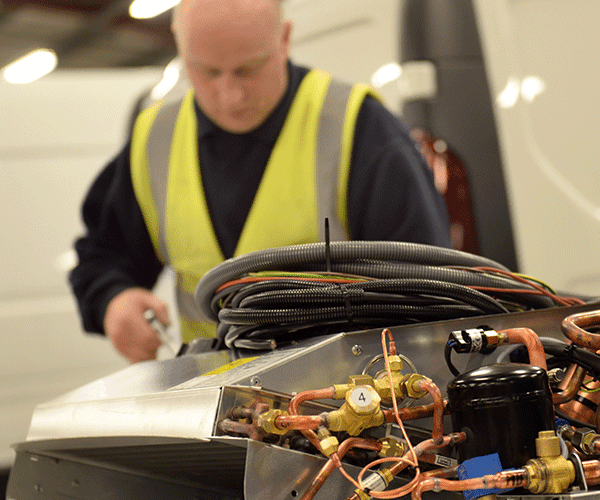Refrigerated vehicle conversions set the standard for the temperature-controlled transport industry.
They are vehicles which have been converted into a fridge or freezer van capable of transporting a variety of goods which require specific temperatures. For instance, AAH’s PharmaVan II vehicles which deliver pharmaceuticals and where the public safety is of paramount importance and vital to meet 2013 Good Distribution Practice (GDP) guidance around medical products for human use. But, what is our refrigerated conversion process?
Refrigerated vehicle conversions
Using manufacturing automation and superior quality control systems, every CoolKit conversion is fully Type Approved. Making use of light, strong and durable components to optimise vehicle productivity, our conversions have the flexibility to accommodate varying and diverse user-specific needs – including (for example) racking, electric standby and multi-temperature capability. The conversions have exceeded the requirements of ATP Testing and have therefore been certified as being highly suitable for the carriage of many kinds of perishable loads including food and drink, pharmaceuticals, analytical samples and catered products.
How do we convert vehicles?
Interior
We choose light, strong and durable GRP sheet with woven roving reinforcement as our regular surface: this way we can avoid the use of weighty timber elements in the wall construction, whilst not compromising on strength and durability. Load bearing floor panels benefit from additional reinforcements and a choice of finishes to suit your operation.
Insulation
We use extruded polystyrene insulating boards to provide the highest manufacturing standards. This material has an exceptionally low thermal conductivity figure together with other appealing characteristics including high tensile and shear strength, fire resistance and closed cell structure to prevent water absorption.
Refrigeration
A refrigeration or heating unit to extract what unwelcome heat does penetrate the lining. We always assist our customers in specifying a suitable refrigeration unit so that the converted vehicle will always maintain the correct temperature in ambient environments of up to 30° Celsius.

